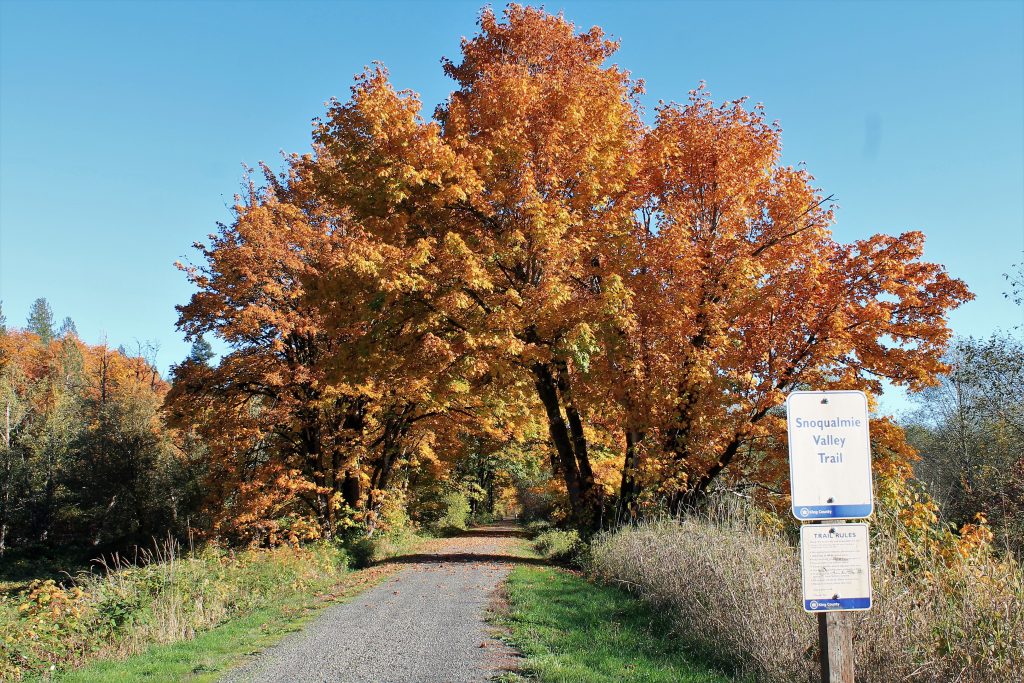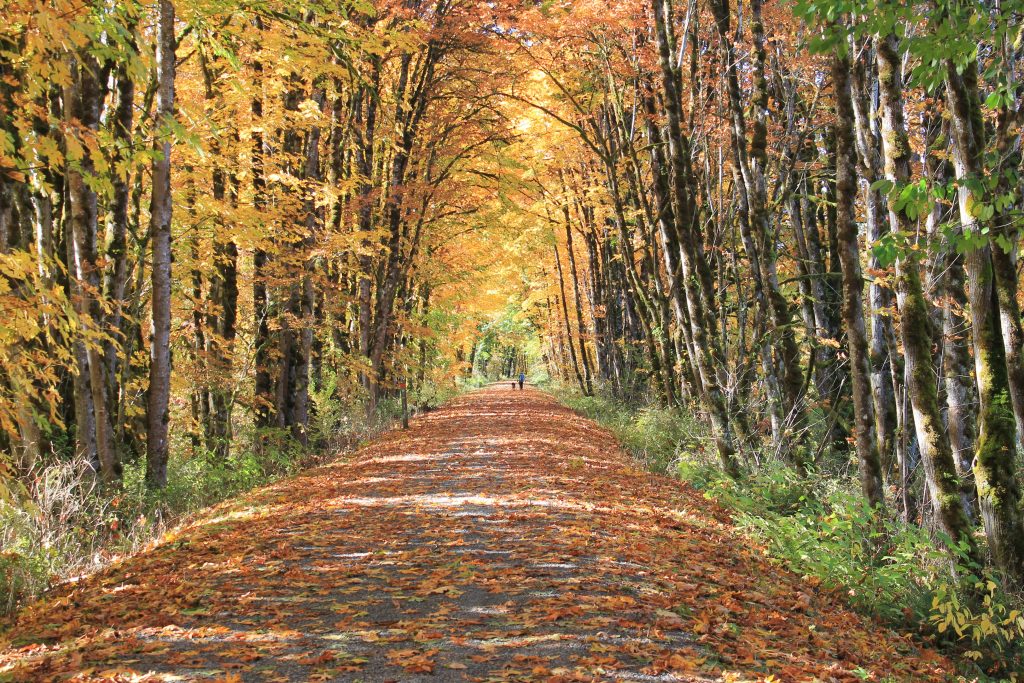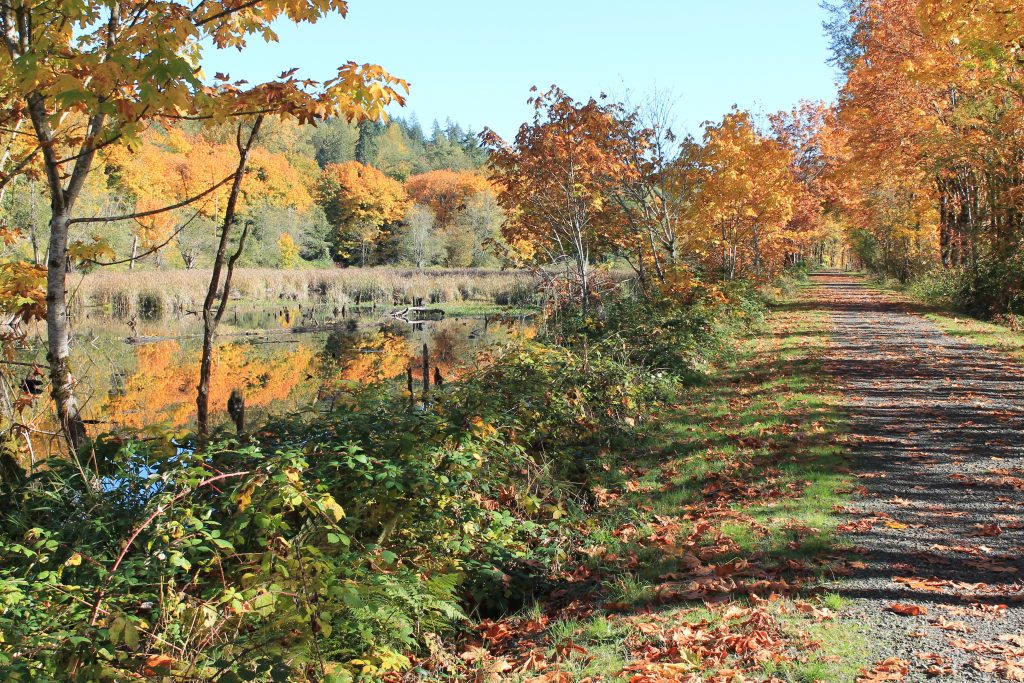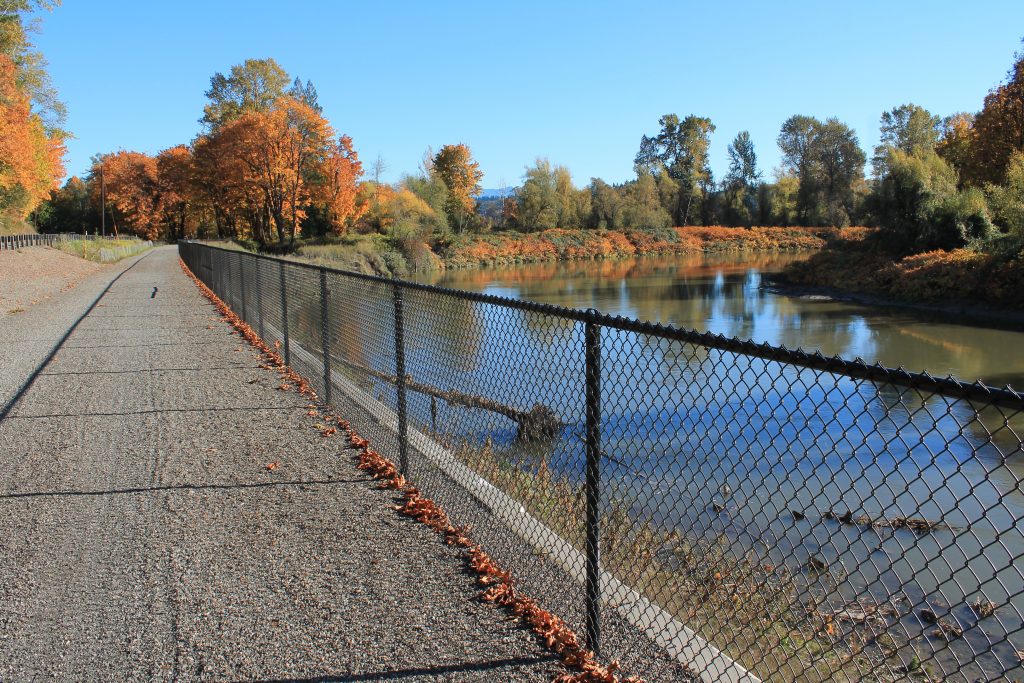The bands of winter rains lately dubbed The Big Dark by local media seemed to vanish early this week in the Pacific Northwest, so I made a bee-line to the Snoqualmie Valley Trail east of Seattle.
The section between Carnation (named for its contented dairy herds) and Duvall drew my attention because it gets a lot of sun, and I wanted to bask in what could be the final sunny days of fall.
What I had forgotten is that much of the trail is also shaded by old big leaf maples that turn bright orange and yellow in the fall.
The 8 miles stretch from Carnation to Duvall is level and follows the former Chicago, Milwaukee, St. Paul and Pacific Railroad spur from North Bend to Everett. South of Carnation the trail climbs a ridge to the town of Snoqualmie, and then climbs again after North Bend to the Cedar Falls trailhead. That trailhead near Rattlesnake Lake marks the junction with the railroad’s main line, which is now the John Wayne Pioneer Trail that goes through a 2-mile tunnel at Snoqualmie Pass.
The Carnation-Duvall part of the trail runs through the lower Snoqualmie River Valley, which had experienced pockets of flooding after heavy weekend rains. The trail was dry, however, although the high water left a “bathtub ring” around some trailside ponds.
Riding along the trail, I remembered that I used to avoid gravel roads and paths. It’s no problem on a rigid mountain bike with 1-1/4-inch commuter tires, however. I’m getting to like the sound of gravel crunching under my tires.
The best trailheads for this section of trail are both located near WA 203. In the south, take Entwhistle Street to Nick Loutsis Park in Carnation. At the north end, take NE Stephens Street to Depot Park in Duvall.





1 comments
These are beautiful pictures.